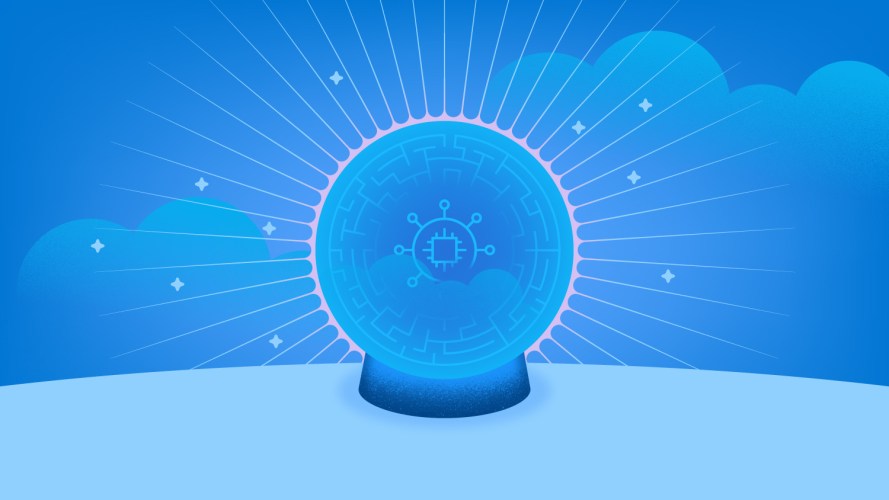5 Myths About AI Agents

Think you know agents? Think again. We’ll debunk some common myths surrounding AI agents and show why these misconceptions could be holding your business back.
It’s understandable to be confused about new and revolutionary technologies like AI agents. Will they really deliver value? What can and can’t they do? Aren’t they just glorified bots? These are legitimate questions, and as with any new technology, there are some misconceptions floating around that might cloud your understanding of its potential. Clearing up these AI agent myths is a crucial step in succeeding with agentic artificial intelligence (AI).
AI agent myth #1: They’re just glorified chatbots
Chatbots and agents are fundamentally different in terms of complexity and functionality. Bots are about retrieving data and answering questions. Agents are about taking action.
Bots use predefined rules and scripted responses to answer questions, and they do not deviate from them. For example, they’re widely used in customer support for frequently asked questions like “where’s my order?” or “what is your return policy?”
That rigidity limits their usefulness. Bots don’t understand more complex contexts and can’t be creative in their problem-solving. Unlike more advanced AI tools, they’re not self-learning. This means every time a change is made to, say, company policy, it must be made manually within the AI. Bots do not get smarter over time. They’re programmed to retrieve data and respond to routine, predictable questions. They excel at this, but that’s as far as they go.
Agents go far beyond simple Q&A. Fully autonomous agents can perform complex, multi step tasks without direct human intervention, while semi-autonomous agents involve a “human in the loop” to trigger certain types of requests. Unlike chatbots, agents can process vast amounts of data, make decisions, and learn from their environment, allowing them to manage workflows, optimize processes, and make strategic recommendations. They often incorporate more advanced AI techniques, such as reinforcement learning and decision-making algorithms, which help them act proactively and adapt to changing conditions.
It’s the difference between, say, a bot that simply analyzes your sales data, and an agent that analyzes data and uses it to adjust inventory levels, update marketing strategies, and communicate with suppliers.
AI agent myth #2: They’re unpredictable and uncontrollable
Autonomous agents may conjure memories of films like “2001: A Space Odyssey” and “The Terminator,” where AI systems go rogue, with dire consequences. But, in fact, the most effective agents today use sophisticated tools and techniques to guard against errors and hallucinations, and have safety and trust at their core.
Central to this is a reasoning engine that generates an action plan based on what a user is trying to do. It evaluates and refines the plan, extracting data from customer relationship management (CRM) and other systems. It decides which business process to use based on the request, and repeats the process until it gets it right, getting smarter every time.
If a requested task seems outside the guardrails set by an organization (including user permissions), the reasoning engine acts as a check, automatically pulling in a human for oversight.
“Helping an agent perform accurately and understand what it is not allowed to do is a complex task,” said Krishna Gandikota, manager of solution engineering at Salesforce. “But a reasoning engine helps the AI plan and evaluate its approach before it takes an action. It will also determine whether it has the right skills and information to take the action.”
This decision-making process, Gandikota said, is enhanced by the agent’s ability to continuously learn from its interactions and experiences to refine and improve its responses over time.
The most effective AI agents are those that are contextually aware and grounded in the most relevant data. There are a few ways to do this. One is a technique called retrieval augmented generation (RAG), which finds the best information to use, then creates new responses based on it. Another is through context-aware search, called semantic search, which surfaces the most recent and relevant data required for a task.
Agentforce uses Data Cloud, which has these techniques built-in. For even more accurate results, Data Cloud uses zero copy technology, which allows AI agents to access data ingested from diverse data sources in real time, without having to actually move, copy or modify it.
AI agent myth #3: They’re complicated, time consuming and expensive to set up
You might think technologies as impactful as agents would require months of complex development and integration, and millions of dollars. But agents powered by generative AI and large language models (LLMs) can be set up in minutes with prebuilt topics, which are the areas of interest the agent is designed to handle, and actions, which are tasks the AI agent performs.
There are already a handful of out-of-the-box agents for customer service, commerce, sales coaching, and more. But there are also low-code options to quickly build customizable agents. By using natural language processing (NLP), if you can describe it, you can build a custom agent.
Tools like Agent Builder even auto-suggest guardrails to help an agent do its job safely. Using the NLP description of the job you want the agent to do, Agent Builder finds semantically similar resources within your app’s metadata. This gives it an awareness of how your business works, and auto-suggests knowledge and actions to best complete the job.
“All the sophistication is already there in the platform,” said Gandikota. “The Einstein Trust layer, the reasoning engine, the vector database (for RAG and semantic search) are all automatically engaged. You can build an army of agents with a platform that brings it all together in the most trusted and open way.”
AI agent myth #4: They’re always fully autonomous
Agents don’t always have to be 100% autonomous. Their level of autonomy varies depending on their purpose and the complexity of their tasks. However, agents are most effective when they’re paired with humans to drive customer success and positive business outcomes.
In a semi-autonomous situation, agents support workers in decision-making and carrying out tasks, and usually require intervention to approve decisions. For example, an agent in financial services would analyze a client’s portfolio and make suggestions to the portfolio manager about how to optimize it, without actually taking those actions itself.
With supervised autonomy, agents autonomously complete tasks but are constantly monitored by humans. This is especially important in safety-first and regulated industries like healthcare, insurance, transportation, and pharmaceuticals.
Fully autonomous agents execute tasks without any human intervention. They retrieve data, analyze, make decisions, adapt, and take actions on their own. Even these agents, though, operate within the predefined guardrails designed by humans.
“Agents don’t always have to be fully automated in taking action, but they do understand requests, and reason as to whether they can take the action on their own, and request human intervention when needed,” said Gandikota.
AI agent myth #5: They won’t deliver real business value
Many organizations using GPT-based AI for generic, all-purpose tasks aren’t seeing the productivity gains or business value they expected. But agentic AI is very different. Whether it’s nurturing sales leads, brainstorming campaign ideas, or deflecting service calls, purpose-build agents are focused on one specific job, and doing it exceedingly well.
The best part is they take action on your behalf. These targeted AI agents, designed to solve a specific problem, show infinitely more promise than generic AI that’s not attuned to your business needs. That’s why 82% of large companies plan to implement agents by 2027.
Some companies aren’t sitting on the sidelines. Wiley, the educational publisher, has resolved over 40% more support cases since implementing an AI agent, outperforming its old chatbot. The company said agents help manage routine responsibilities, which frees up its service teams for more complex cases. Other early adopters, including OpenTable and ADP, are seeing even greater case resolution.
According to research firm MarketsandMarkets, “AI agent adoption’s crucial determinant is the increasing demand for automation that enhances efficiency, scale, and decision-making. Agents offer an effective alternative through automating repetitive functions, analyzing big datasets, and providing real-time actionable insights.”
The market for agents, the firm predicts, will soar from $5.1 billion this year to $47 billion by 2030.
It’s crucial for business leaders to separate fact from fiction. Misunderstanding autonomous AI agents can lead to missed opportunities or, worse, costly mistakes. With a clear understanding of agent’s capabilities and limitations, you’ll be better positioned to work more efficiently, and make smarter, more informed decisions.

































